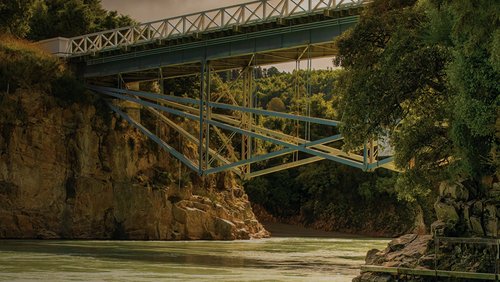30 Oct 2023
Green growth, degrowth and engineering.
Last year saw the 50th anniversary of the influential Club of Rome publication The Limits to Growth, which analysed the potential consequences of exponential population growth and resource consumption within a finite world. It was revisited in the 1992 follow-up Beyond the Limits, which addressed criticisms and refined some of the modelling assumptions in the original publication. But the message was the same: we cannot continue on a business-as-usual basis. Yet we did, driven by our usual economic metrics.
In the face of worsening environmental outcomes, the concept of green growth gained prominence in the 2000s, culminating in the 2011 OECD report Towards Green Growth. It emphasised the need for economic growth to be compatible with environmental sustainability, and highlighted policy approaches that could promote both objectives. The key idea was we could still have economic growth as long as it was within ecological limits and we addressed environmental challenges.
The notions of a green economy and decoupling were specifically introduced by the United Nations Environment Programme, also in 2011. Decoupling refers to a relative reduction of resource use and an absolute reduction of environmental impacts while maintaining growth and improving human wellbeing.
Our engineering practices contribute to economic growth, but we need to have a holistic, systems perspective of the implications of those practices. It is not only about reducing the environmental impacts and resource use of our operations or the project that we undertake. We need to think about upstream and downstream effects. How can we reduce environmental and social impacts in our supply chains, including outside our borders? What are the end-of-life impacts of our projects, of our assets, and of the derived products and services?
These considerations are implied in our code of ethics, and we’re responsible for weighing up options and making the right decisions from an overall sustainability perspective.
The global transition of the energy sector is a clear example of green growth. For Aotearoa, it’s projected the demand for electricity will increase significantly as we electrify the industrial and transportation sectors and produce new fuels such as green hydrogen. And our target of a net zero carbon emissions economy means we need to meet the demand with renewable energy sources and sufficient storage to deal with variability of supply and balance the power system. The next three decades will require significant investment in infrastructure, which implies economic growth. Our challenge, from a systems thinking perspective, is to ensure those investments are sustainable.
As green growth emerged, the concept of degrowth also gained traction. Coined in 1972, degrowth has been further developed with attempts to reimagine economic systems based on principles of sustainability, social equity and wellbeing, rather than perpetual growth. The argument is that green growth as a sole strategy for sustainability is simply not enough. Advocates point to research showing efforts to decouple economic growth have not succeeded and are unlikely to succeed. Degrowth is not favoured by politicians or industrialists. It means living better with less: reducing consumption and resource throughput in the economic system by putting wellbeing ahead of profit.
Engineering practice includes strategic analyses and planning. We need to be proactive and inform the various sectors and organisations we work in, and society more broadly. Questions to consider include: what are the sunset and upcoming industries, technologies, processes, products and services? How can we transform some of those to reduce production and consumption? And how do we change our engineering practices accordingly? For example, planned obsolescence — techniques manufacturers use to reduce the life of
a product — has been outlawed in France with the rest of Europe following suit.
We need to stay ahead of the law, consider what's ethically right, and make society and environmental wellbeing the metric that drives engineering decisions.
As we aim to make the energy sector greener, we also need to use less energy. Urban landscapes are a place to start. Utrecht in the Netherlands transformed its city centre by removing a motorway to restore canals, improving public transportation and making it “a place to be rather than drive through”.
Our civilisation needs to put less emphasis on growth and transition to a steady-state economy that allows decent living standards, within the carrying capacity of the ecosystems to survive and prosper within planetary boundaries.
Alan Brent CMEngNZ is Professor of Sustainable Energy Systems at Victoria University of Wellington—Te Herenga Waka and an Executive Committee Member of The Sustainability Society.
This article was first published in the September 2023 issue of EG magazine.




